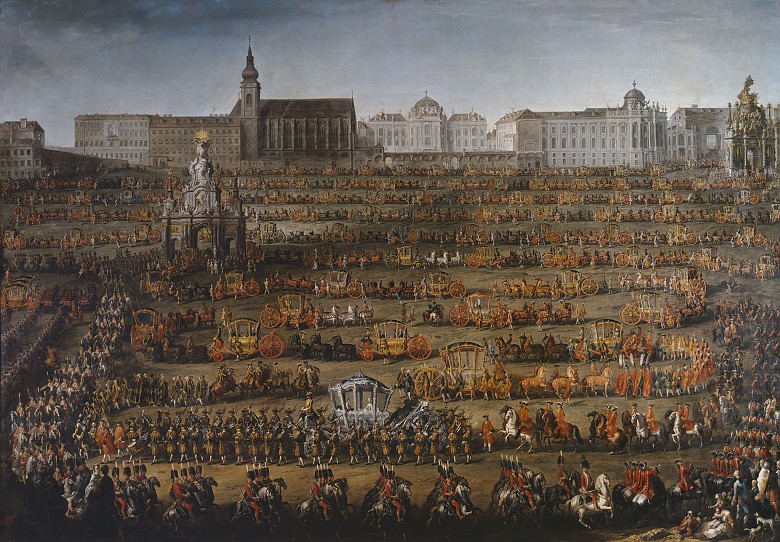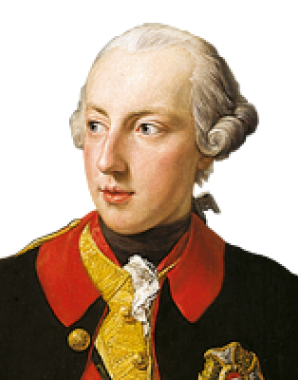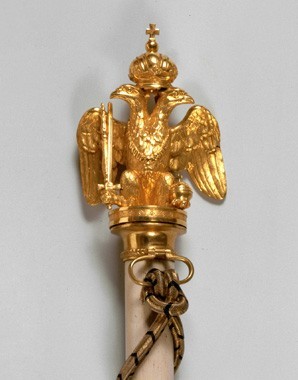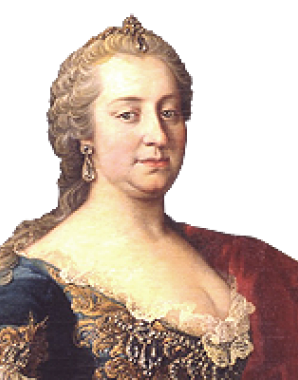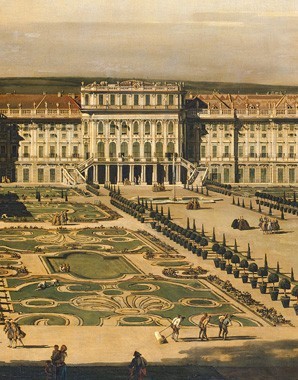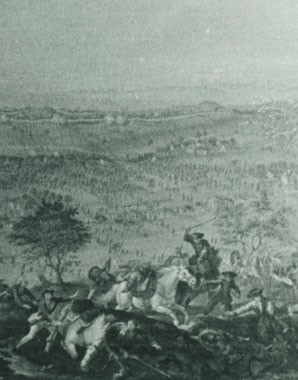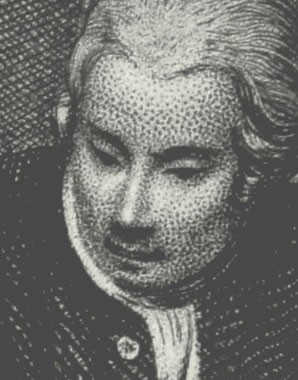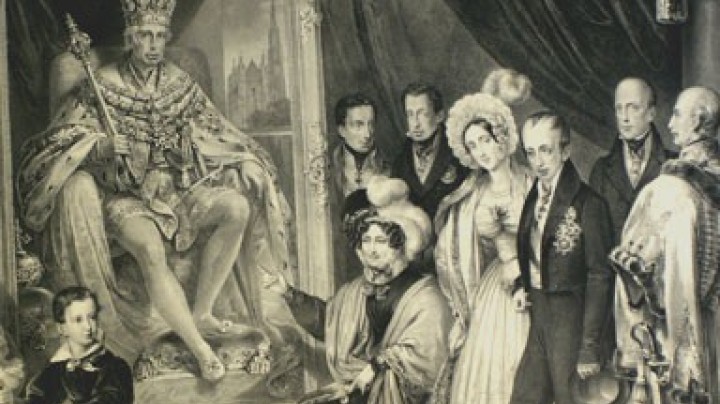A wedding album – the marriage of Joseph II to Isabella of Parma
The wedding of a crown prince was a significant event for a dynasty such as the House of Habsburg-Lorraine, which is why Maria Theresa had the festivities immortalized on canvas for posterity. Five impressive large-scale paintings from the studio of Court Painter Martin van Meytens, impressive in their wealth of detail, convey an impression of the splendour of a Court celebration during the Rococo period.
Description of the wedding from the newspaper 'Wienerisches Diarium', issue of October 11, 1760The very large hall was filled with a tremendous throng of ladies and cavaliers, and the common people were also granted the consolation of being permitted, in stages, to enter the hall and watch the proceedings.
The pomp of the wedding festivities displayed was intended to obliterate memories of the misery of the Seven Years’ War and give the rest of Europe the impression that the resources of the Monarchy were inexhaustible. However, politics had also played a key role in the choice of bride. The fact that the lot fell to Isabella of Parma, who originated from an Italian collateral line of the French Bourbons, arose as a result of the ‘renversement des alliances’, the switch of alliance by the Habsburgs to France. The plan was to strengthen the new alliance with the old ‘arch-enemy’ through reciprocal marriages between the dynasties.
There now unfolded the usual ceremonial procedure for a dynastic wedding. The high-ranking (and wealthy) Prince Joseph Wenzel of Liechtenstein was despatched to Parma as proxy in order to escort the bride to Vienna, this being a prestigious, but also very costly honorary mission.
It was in Vienna that most of the festivities then took place. The bride entered the city in an impressive ceremonial procession of over 90 coaches, through the narrow streets of the old city, past triumphal arches made of wood and plaster glorifying the bride and the House of Habsburg in allegorical form. The wide square depicted did not exist, and the painters had left out the houses purely in order to reveal a view of the ceremonial coaches.
The actual wedding ceremony in St Augustine’s Church, the parish church of the Court, was followed by a public showcase banquet at the Hofburg. Only members of the imperial family sat at the table. In the middle sat the ruling imperial couple, Maria Theresa and Franz I Stephan, while to the left and right one can make out the bride and groom. The tableware, made of solid gold, was also the bride’s wedding gift. The food was served by members of the aristocracy dressed in black silk Spanish coat dress, here performing their honorary offices as cupbearers and stewards, and the ceremonial order of events followed a strict choreography, even down to the number of bows required.
The festivities continued over the following days. This representation of a musical ‘serenata’ reveals one noteworthy detail, showing the young Mozart among the throng of spectators.
The cycle of paintings can be viewed in the Hall of Ceremonies at Schönbrunn Palace.
